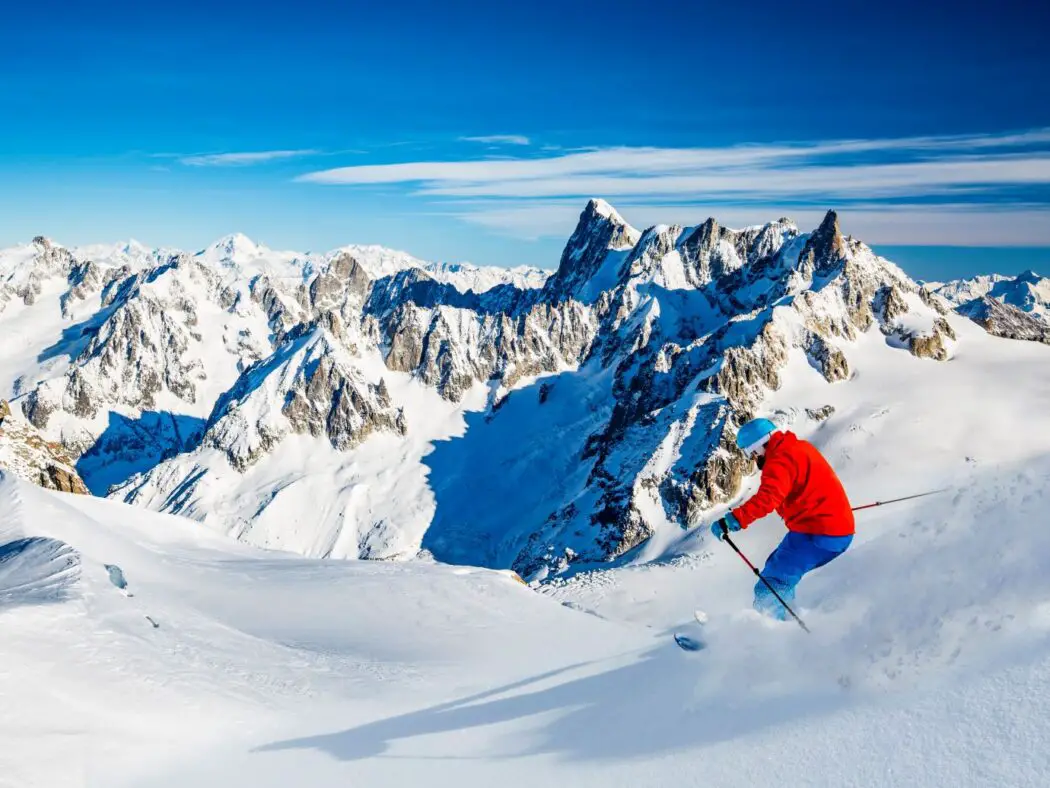Planning your first ever ski trip in Europe?
Before you hit the slopes, it’s important to be prepared with the right skills, kit, and knowledge. Whether you’re heading to Austria, Switzerland or France, the rules and risks of the slopes remain strikingly similar. In this guide, we’ve outlined 5 of the most critical steps in planning a successful debut ski holiday.
Plan your first ski holiday in 5 simple steps
1. Decide when to go
Firstly, you should do your research and decide on the best time of year to go.
Think about what you’d like from the trip. Would you like to commemorate a special family occasion, or would you like to see that special ski resort atmosphere at Christmas? The best time to go skiing truly depends on personal preferences, but December to March is typically prime skiing season. These late winter months offer optimal snow conditions and bright weather.

2. Choose the right resort
Next, when you’re choosing a ski resort for your first winter holiday, there’s plenty to think about. Consider factors such as terrain, the difficulty of the routes, and the type of lessons offered by ski schools on the resorts.
Popular novice-friendly resorts in Europe include Les Gets in France, Livigno in Italy, and Zell am See in Austria. In fact, there are plenty of beginner-friendly ski resorts in Austria. However, if you’ve had some indoor ski lessons in the UK before your trip, there’s no reason why you shouldn’t push the boat out and head to a resort with intermediate level slopes too.
3. Book ski lessons in advance
As a first timer, it’s prudent to seek the advice of a professional ski or tour company. Even though it’s possible to arrange the logistics independently, it can become a lifeline to have a professional team on hand.
With the support of a professional team, you can make your dreams of ski holidays in France come true. From buying the best value ski pass to choosing the right slopes for the day, working with experts means you’ll have everything covered.

4. Pack the right gear
Dressing appropriately for the mountains is essential to help you stay warm, dry and comfortable on the slopes. The best way to stay the right temperature is by wearing an effective layering system.
Pack thermal base layers, waterproof ski jackets and salopettes, plus insulated gloves. You can make the biggest statement with a pair of ski goggles, which plays a vital role in protecting your eyes from glare and UV radiation. And, even though you might not feel hot, don’t forget to apply sunscreen to exposed skin – since sunburn is more likely at high altitudes.
5. Be prepared
Finally, it’s worth making sure that you’re physically ready for this challenge too.
Ski resorts are almost always positioned at high altitudes, where the air is thinner, and temperatures can fluctuate rapidly. Thin air means there’s less oxygen to go around, so your body will need to work harder for the same physical effort.
Do some training and learn some essential ski slope safety skills before your trip. Be prepared for sudden weather changes on the slopes by carrying extra clothing and emergency supplies in your backpack. Drink plenty of water throughout the day to stay hydrated too, as you’ll still sweat on the slopes!





